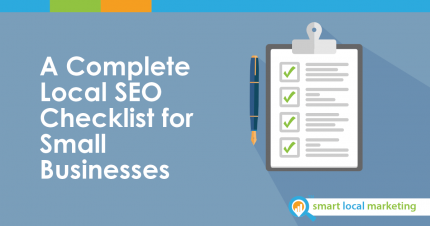Website optimization is vital for small businesses as it plays a significant role in their online success. A well-optimized website ensures that it is user-friendly, search engine friendly, and delivers a seamless experience to visitors.
Firstly, website optimization helps small businesses enhance their visibility on search engines. By optimizing keywords, meta tags, and content, businesses can improve their search engine rankings, leading to increased organic traffic and visibility.
Secondly, an optimized website improves the user experience. Visitors are more likely to stay on a visually appealing website that loads quickly and is easy to navigate. By optimizing the website’s design, layout, and structure, small businesses can provide a positive user experience, resulting in higher engagement and increased conversions.
Thirdly, an optimized website improves mobile compatibility. With the increasing use of smartphones, having a mobile-friendly website is crucial. Optimizing for mobile ensures that the website adapts to different screen sizes, leading to improved user experience and increased mobile traffic.
Lastly, website optimization enables small businesses to track and analyze their website performance. Businesses can gain valuable insights into user behavior, traffic sources, and conversion rates through tools like Google Analytics. This data can be used to make informed decisions and refine website strategies for better results.
Here’s a step-by-step list to help you conduct a complete audit of your small business website and other digital properties.
1. Technical SEO for Small Businesses
- Website loading speed and performance: Website loading speed is crucial for both user experience and search engine rankings. Slow-loading websites can lead to high bounce rates and lower conversions. To optimize website speed, consider compressing images, reducing HTTP requests, minifying CSS and JavaScript files, enabling browser caching, and utilizing a content delivery network (CDN).
- Mobile responsiveness and usability: With mobile traffic surpassing desktop traffic, your website must be mobile-friendly. Make sure your website adapts to different screen sizes, ensures easy navigation, and provides a seamless browsing experience across devices. Test your website on different mobile devices and consider implementing mobile-first design principles.
- URL structure and readability: Having clear and descriptive URLs helps search engines understand your website’s content and enhances user experience. Opt for URLs that include relevant keywords and are concise and readable. Avoid using long strings of numbers or irrelevant characters that make it difficult for users to understand what the page is about.
- Meta tags and descriptions: Meta tags, particularly the meta title and meta description, play a significant role in attracting search engine users to click on your website. Ensure that these tags accurately represent the content on each page and incorporate relevant keywords. Craft compelling and concise meta descriptions to entice users to click through to your website.
- Heading tags and keyword usage: Heading tags (H1, H2, etc.) provide structure to your content and help search engines understand the hierarchy of your page. Use headings to break up your content and include keywords naturally to improve SEO. Ensure that the heading tags follow a logical structure and accurately summarize the content under each section.
- XML sitemap and robots.txt file: An XML sitemap is a file that lists all the pages on your website, facilitating easy crawling and indexing by search engines. Ensure that your XML sitemap is up to date, includes all important pages, and is easily accessible to search engines. On the other hand, the robots.txt file informs search engine crawlers which parts of your website to exclude from indexing. Review the robots.txt file to ensure it is correctly configured, allowing search engines to crawl and index the appropriate pages.
- Site architecture and internal linking: A well-structured website architecture ensures that search engines can easily navigate and understand your content. Consider organizing your website into logical categories and subcategories, ensuring that pages are easily accessible through a clear navigation menu. Additionally, internal linking helps search engines understand the relationship between different pages on your website. Include relevant internal links to guide users and search engines to relevant content, increasing your site’s overall visibility and authority.
Need help with the technical stuff? All of BizIQ’s organic SEO packages start with a thorough (and ongoing!) technical site audit.
2. User Experience (UX) Recommendations for Small Businesses
- Clear and intuitive navigation: One of the key aspects of a user-friendly website is having a clear and intuitive navigation menu. Users should be able to easily find what they are looking for without getting confused or overwhelmed. Ensure that your navigation is organized, visually appealing, and clearly labeled.
- Well-structured and organized content: A cluttered and disorganized website can frustrate users and discourage them from further exploring your offerings. Break down your content into logical sections with clear headings and subheadings. Use bullet points and paragraphs to make scanning the content easy. Consider implementing a search function for users to quickly find specific information.
- Engaging and visually appealing design: The overall design of your website plays a crucial role in creating a positive user experience. Use high-quality visuals like images and videos to engage your visitors and make your website visually appealing. Pay attention to color schemes, fonts, and overall aesthetics to create a cohesive and inviting design.
- Optimized images and multimedia: Large image files can slow down your website’s loading speed, impacting the user experience negatively. Optimize your images by compressing them without sacrificing quality. Additionally, ensure that any multimedia elements, such as videos or audio files, are properly embedded and load quickly.
- Call-to-actions (CTAs) placement and effectiveness: Effective CTAs guide users towards taking desired actions, such as making a purchase, signing up for a newsletter, or contacting you. Place CTAs strategically throughout your website, ensuring they are easily visible and have clear and enticing copy. Regularly test and optimize your CTAs for maximum effectiveness.
- User-friendly forms and contact information: If your website requires users to fill out forms or contact you, ensure the process is simple and user-friendly. Keep form fields to a minimum and clearly label required fields. Provide multiple ways to contact you, such as a contact form, email address, and phone number. Test the forms regularly to ensure they are functioning correctly.
- Accessibility and inclusion considerations: Ensure your website is accessible to all users, including those with disabilities. Use alt tags for images, provide text alternatives for multimedia content, and ensure proper color contrast for readability. Pay attention to font sizes and formatting to accommodate users with visual impairments. Make your website inclusive and welcoming to diverse audiences.
- Integration of chatbots for improved customer support: Chatbots can enhance the user experience by providing instant and personalized assistance. Consider integrating a chatbot into your website to answer frequently asked questions, provide product information, or assist users in navigating your site. This can save you and your customers time while improving overall customer satisfaction. Interested? Check out BizIQ’s chatbot for small businesses.
Implementing these UX recommendations allows you to optimize your small business website to provide a better user experience. A user-friendly and engaging website attracts and retains visitors and increases the chances of turning them into loyal customers.
Ready to sharpen your skills? Check out our complete local SEO checklist for small businesses.
3. Conversion Rate Optimization for Small Businesses
Conversion rate optimization is crucial to optimizing a small business website for better results. Small businesses can significantly improve their online success by focusing on maximizing the number of website visitors who take desired actions, such as making a purchase or filling out a contact form. Here are several strategies to consider when conducting a site audit for conversion optimization:
- Custom landing pages for paid campaigns: Creating custom landing pages tailored specifically to each campaign’s goals is essential when running paid marketing campaigns. By aligning the landing pages with the corresponding advertisements, you can ensure consistency and increase the chances of converting visitors into customers. These landing pages should include clear and concise information, captivating visuals, and a strong CTA that nudges visitors toward the desired conversion.
- A/B testing to optimize conversions: A/B testing involves comparing two versions of a webpage to determine which one performs better in terms of conversion rates. You can identify what resonates best with your target audience by testing elements like headlines, layouts, colors, and CTAs. This data-driven approach enables small businesses to continuously optimize their website for maximum conversions.
- Emphasis on relevant and persuasive content: When auditing your small business website, pay attention to the quality and relevance of the content you present to your visitors. Engaging and persuasive content can significantly influence user behavior and increase conversions. Ensure that your website’s content clearly conveys the value proposition of your products or services and addresses customers’ pain points.
- Implementing social proof elements: Including social proof elements on your website can boost credibility and trust, ultimately leading to higher conversions. Testimonials, reviews, case studies, and client logos are examples of social proof that can reassure potential customers about the quality and reliability of your offerings. Display these elements strategically throughout your website, especially on the landing pages and product/service pages.
- Personalization and segmentation of website content: To improve user experience and increase conversions, consider implementing website personalization and segmentation techniques. Segment your audience according to their demographic information, location, or previous interactions with your website. By tailoring content to specific audience segments, you can deliver more relevant experiences that resonate with visitors and prompt them to convert.
- Effective use of CTAs and lead-generation forms: Optimizing your website for better results includes optimizing your CTA buttons and lead-generation forms. Ensure that CTAs are strategically placed throughout your website, directing visitors to take the desired action. Make them visually appealing, persuasive, and clear. Similarly, streamline your lead-generation forms by minimizing the number of required fields and avoiding unnecessary distractions, making it easier for visitors to submit their information.
Conversion optimization is vital in improving a small business website’s performance. By focusing on custom landing pages, A/B testing, relevant content, social proof, personalization, effective CTAs, and lead-generation forms, small businesses can enhance their website’s ability to convert visitors into loyal customers. Conducting a thorough site audit, implementing these strategies, and continuously monitoring results will lead to better conversion rates, increased customer satisfaction, and overall business growth.
4. Integration with Other Marketing Channels
In today’s digital age, having a well-optimized website is crucial for the success of small businesses. However, optimizing your website goes beyond just the design and content. It also involves integrating your website with various marketing channels to maximize reach and improve results. Let’s explore some key ways to integrate your website with other marketing channels:
- Linking to Google Business for local SEO: Optimizing your website for local search engine optimization (SEO) is essential if your small business has a physical location. By linking your website to your Google Business profile, you can improve your local ranking in Google search results and increase visibility to potential local customers. Get more tips on optimizing your Google Business Profile for local SEO.
- Integration with social media channels: Social media platforms provide an excellent opportunity to promote your business and engage with your target audience. By integrating your website with social media channels like Facebook, Twitter, Instagram, or LinkedIn, you can easily share your website content, drive traffic, and build a loyal community of followers.
- Implementing share buttons for easy social sharing: To encourage readers to share your website content on their social media profiles, it’s important to incorporate social sharing buttons. By placing buttons for popular social media platforms such as Facebook, Twitter, Pinterest, and LinkedIn, you make it effortless for visitors to share your content, expanding its reach to a broader audience.
- Utilizing email marketing sign-up forms: Email marketing remains one of the most effective channels for small businesses to drive engagement and conversions. Integrating your website with email marketing sign-up forms lets you capture visitor information and build a valuable email list for future marketing efforts. Place sign-up forms strategically on your website to attract subscribers and incentivize users to join your email lists, such as exclusive offers or valuable content.
- Collaborating with influencers and affiliates: Influencer marketing and affiliate programs can be powerful channels for small businesses to expand their reach and drive sales. By collaborating with influencers in your industry or setting up an affiliate program, you can leverage their audience and expertise to promote your website and products. Make sure to provide unique affiliate links or promo codes, which can ultimately increase traffic and conversions on your website.
- Incorporating live chat functionality for customer engagement: Customer engagement is key to building trust and converting visitors into customers. By adding live chat functionality to your website, you provide real-time support to potential customers and answer their questions promptly. Live chat enhances the user experience and increases the chances of converting visitors into paying customers.
Integrating your website with these marketing channels allows you to optimize your small business website for better results. Each integration plays a vital role in expanding your online presence, driving traffic, and boosting conversions. Incorporate these strategies into your website audit plan and watch your online visibility and business success soar.
5. Tracking and Analytics for Small Businesses
When it comes to optimizing your small business website for better results, tracking and analytics play a crucial role. By implementing the right tracking tools and regularly analyzing the data, you can gain valuable insights into your website’s performance and make informed decisions to drive more traffic, conversions, and revenue. Here are some key aspects to consider:
- Implementing Google Analytics for tracking website performance: Google Analytics is a powerful, free tool that provides detailed insights into your website’s performance. Installing the tracking code on your site lets you track various metrics such as visitor count, page views, bounce rate, and average session duration. This data will help you understand how well your website is performing and identify areas that need improvement.
- Setting up goals and conversion tracking: Goals in Google Analytics allow you to measure specific actions you consider conversions, such as purchases, form submissions, or newsletter sign-ups. By setting up these goals, you can track the number of conversions and analyze the conversion rate. This information will help you identify which pages or marketing efforts drive the most conversions and optimize accordingly.
- Utilizing heatmaps and user behavior analytics: Heatmaps and user behavior analytics tools like Crazy Egg or Hotjar provide visual representations of how visitors interact with your website. Heatmaps show where visitors click, scroll, or spend the most time on a page. User behavior analytics tools provide session recordings, allowing you to witness how visitors navigate your site firsthand. By analyzing this data, you can identify any usability or design issues and make necessary improvements to enhance the user experience.
- Monitoring traffic sources and user demographics: Understanding where your website traffic is coming from and who your visitors are is essential for effective targeting and marketing strategies. Google Analytics allows you to track traffic sources, including organic search, direct visits, referrals, and social media. Additionally, you can delve into user demographics, such as age, gender, location, and interests. This information will help you identify the most effective channels for driving visitors to your site and refine your targeting efforts.
- Regularly analyzing and optimizing marketing campaigns: By monitoring the performance of your marketing campaigns through analytics, you can identify which campaigns are driving the most traffic and conversions. Analyzing campaign data will help you understand which channels, ad groups, or keywords are performing well and allocate your budget accordingly. It’s important to regularly optimize your campaigns based on these insights, experimenting with different strategies, ad placements, or messaging to improve your results.
Tracking and analytics are essential for optimizing your small business website. By implementing tools like Google Analytics, setting up goals, utilizing heatmaps, monitoring traffic sources, and regularly analyzing marketing campaigns, you can gather valuable insights that will enable you to make data-driven decisions, improve your website’s performance, and achieve better results for your business.
Local SEO for Small Businesses
Website optimization is crucial for small businesses as it directly impacts their online visibility, user experience, and overall success. A poorly optimized website can hinder growth and limit potential opportunities in today’s digital landscape, where competition is fierce and customer expectations are high.
Conducting a website audit is a necessary first step to reap these benefits. Businesses can identify areas of improvement by evaluating various elements such as website performance, content quality, and technical aspects. Taking this a step further, implementing optimization strategies based on the audit findings helps businesses address weaknesses, capitalize on opportunities, and stay ahead of competitors.
Finding a local marketing agency that offers competitive local SEO for small business will help you get what you need from an expert point of view. BizIQ offers affordable local SEO solutions for businesses to get you noticed by potential customers and convert interest into sales. Check out our digital marketing case studies to see how we’ve helped businesses just like yours find marketing success.











